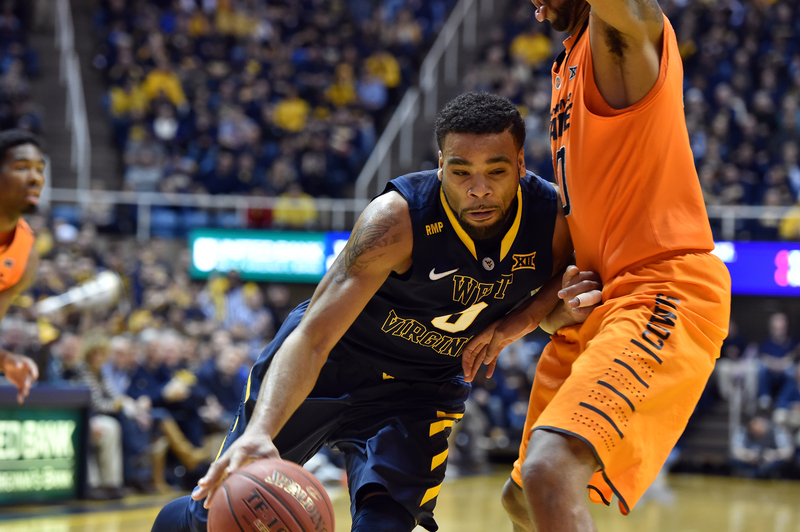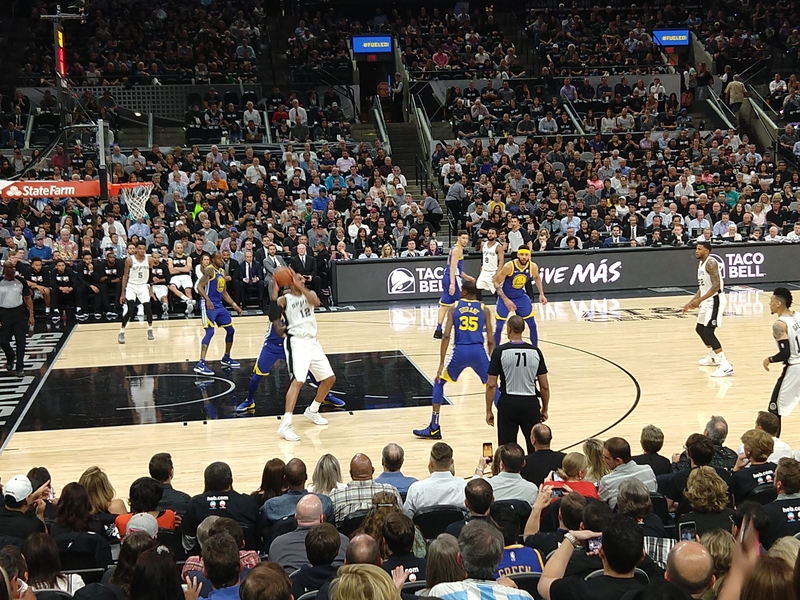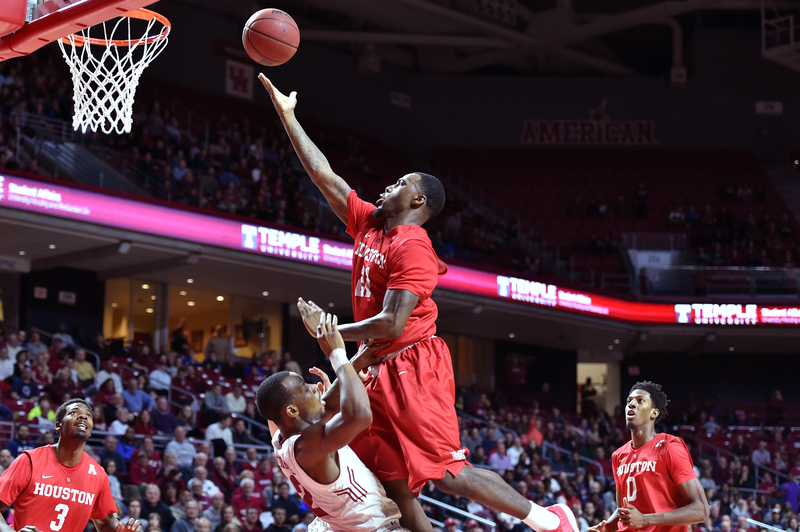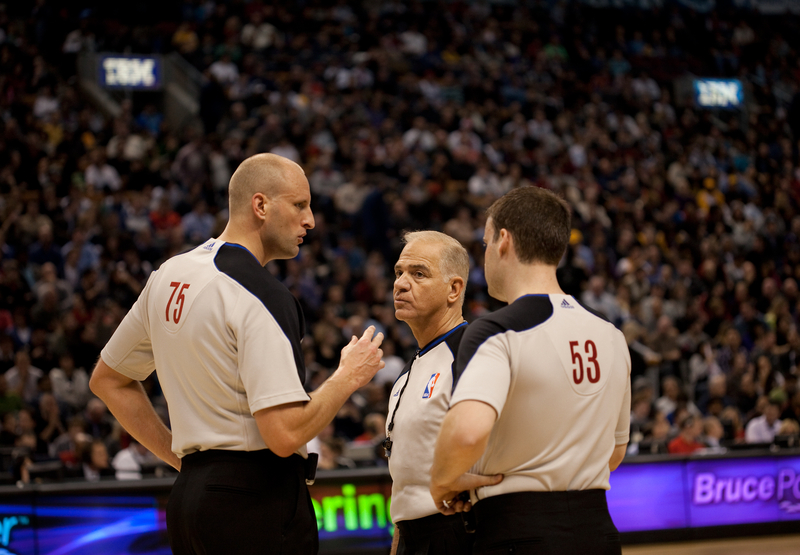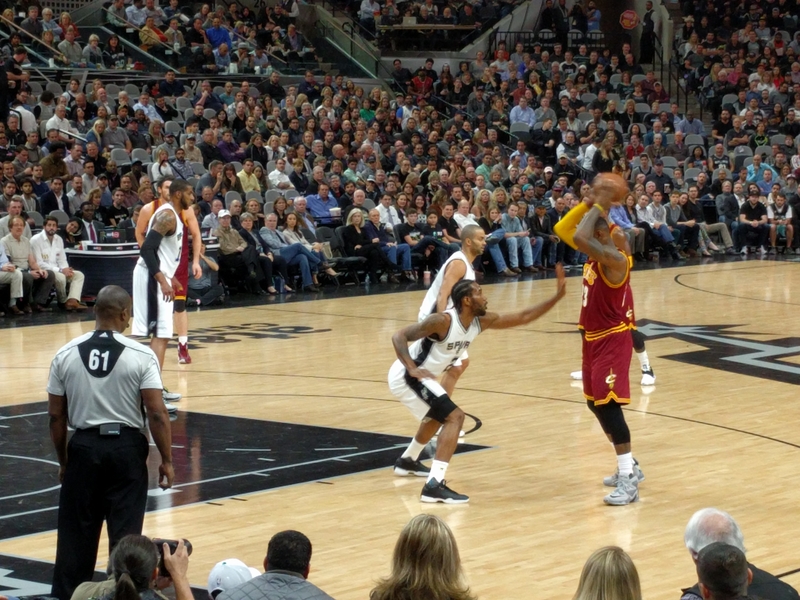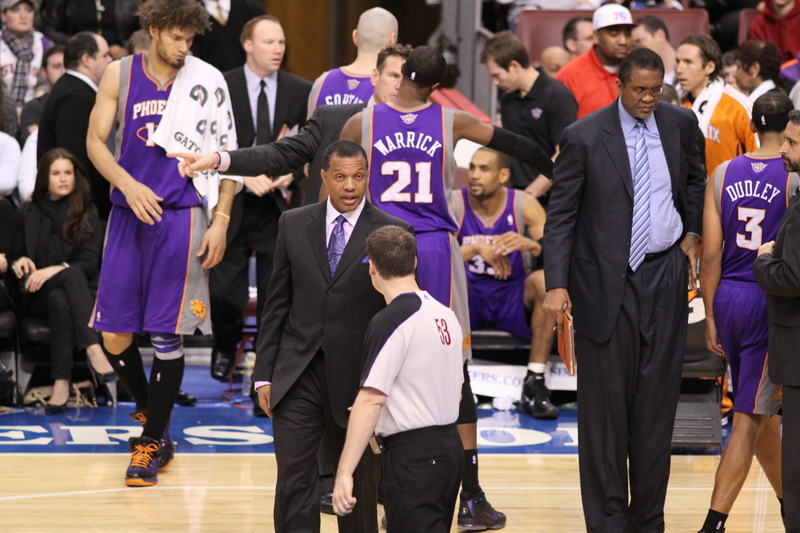Last updated on October 25th, 2023 at 07:08 am
A basketball charge is an offensive foul called on a player who runs into a defensive player with an established position in the frontcourt. This foul is similar to a blocking foul, which happens when a defensive player improperly sets position beneath the basket and stops an offensive player from making a play with the ball. Here is the complete breakdown of everything you need to know about a charge in basketball.
How to Increase Your Chances of a Charge Call?
For a defensive player, you want a charge call to occur when there is contact. To increase the chances of this call taking place, you should fall immediately after contact with the offensive player to get the referee’s attention. Sometimes a bit of theatrics after a fall can boost the likelihood of a charge call. However, overdoing the fall may work against you, as refs may assume you are flopping.
Nevertheless, players should be conscious of where their feet are when they take the potential foul. For instance, an area on the court (a semicircle) will penalize you as the defender when making contact with an offensive player during a shot.
What is the Semicircle on the Basketball Court Under the Hoop?
The semicircle underneath the net is essential for judging whether or not a collision under the net is a blocking foul or a charging foul. This semicircle is called the restricted zone, or restricted area, and is a four-foot-arc around the basket. The purpose of this court’s area is to prevent secondary defenders on the basketball court from taking position under the net and drawing charges on basketball moves like layups or slam dunks.
The restricted area hasn’t always been a part of the key on a basketball court. It only began during the 1197-98 season. The NCAA adopted the use of the restricted area during the 2011-12 season in college basketball.
The NBA rulebook states that a referee may use instant replay to look at a defender’s feet to help them rule on a block/charge call during a game. If a defender has one foot on the semicircle when they collide with a ball-handler, it can cause a defensive foul and allow the other team to shoot free throws.
What is the Difference Between a Block and a Charge?
A block and a charge are two different personal fouls in basketball involving physical contact near the basket. They’re two sides of the same interaction. As stated above, a charge is an offensive foul that happens when an offensive player runs into a defender who has established a legal guarding position in the frontcourt.
Meanwhile, a block is the inverse of a charge. That is to say that a block is a defensive foul that happens when a player impedes an offensive player dribbling the ball or attacking the net.
Tips for the Defender
To establish an excellent position to generate a charge call, defenders should plant themselves in the defensive zone, outside of the restricted area, far enough away from an offensive player. There is enough time for the offensive player to change direction or avoid them.
What Does the Referee Do to Signal a Charge Call?
When a charge occurs, the referee will point their arm to the other end of the court. That signal means that the play is now going the other way, which favors the defensive team.
What Happens After a Charge Call in Basketball?
Once the referee signals a charge call, two things happen. First, the offensive player who made the charge gets a foul added to their line for the game. In the NBA, it takes six fouls to foul out of a game, while in college basketball, it is five.
Second, there is an immediate turnover on the charging play. That means that the defense team now gets the ball and has their turn to score. Getting a charge call during the final seconds of a game can be a huge momentum swing for one team.
Are Referees Bad at Calling Charges?
Some fans may criticize refs if they miss a charge or mistake a block for a charge. What can make matters worse is if basketball players flop or throw themselves down onto the court after contact to try and draw the charging call. This action can make it harder for refs to judge these plays effectively, especially if significant contact occurs.
The NBA currently doesn’t allow referees to review charging and blocking calls using instant replay. If refs look at the tape to try and establish the legality of contact, it’s usually to evaluate the placement of a defender’s feet. This replay review can help clear things up and make calls more accurate, but it won’t help referees make up for missing calls.
Conclusion: What is a Charge in Basketball?
Charging is one of the rules in basketball to help make the game safe for players on the court. It attempts to limit unnecessary contact in high-traffic areas on the court and encourages players to shoot or pass the ball to make spectacular plays. Passing and or shooting the ball makes the game more exciting to watch for fans too.
This play is similar to a blocking foul when a defensive player blocks or interferes with an offensive player making a legal basketball play. Fans need to know how to judge these rules so they can look out for them during fast-paced games!
Similar Posts
What is a Triple-Double in Basketball?
What is a Backcourt Violation in Basketball?
What is a Free Throw in Basketball?
What Does a Bonus Mean in Basketball?
What is an Assist in Basketball?
What is a Double Dribble in Basketball?
What is a Screen in Basketball?
What is Goaltending in Basketball?
What Does ISO Mean in Basketball?
Greg Kristan, owner of The Stadium Reviews, LLC and TM Blast, LLC, brings his extensive experience visiting over half of the MLB ballparks, along with numerous MLS, NHL, NBA, and NFL venues, to provide in-depth coverage on the bag policy, food options, and parking. He has also been interviewed about his experiences on several sports podcasts.


